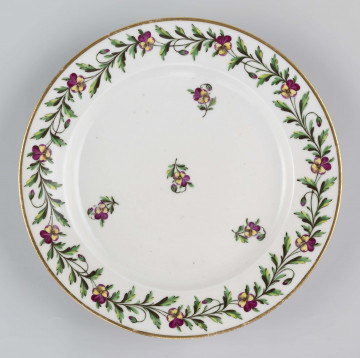
Creamer jug
1825 — 1835
National Museum in Lublin
Part of the collection: Polish porcelain from the 1st half of the 19th c.
Undoubtedly some of the most valuable Polish 18th century porcelain wares were produced in the manufactory in Korzec. The factory was founded on 17 November 1783 by Józef Klemens Czartoryski in cooperation with Franciszek Mezer, whom Czartoryski entrusted with the role of factory director. In the concluded contract, from the very beginning he was to meet high requirements, he was to take care of the whole investment and make sure that: “the craftsmen fulfilled their duty and produced the best products”.
Czartoryski knew that the success of the enterprise depended mainly on the low cost of raw materials. The clay deposits in his lands, the samples of which had been earlier submitted to expertise in Meissen, received a positive opinion, which made it possible to use the kaolin deposits for the production of porcelain.
In 1784 Franciszek Mezer, who was brought from Warsaw, started the production of faience and porcelain. The Korzec manufactory soon equalled the quality of its products with other factories renowned in Europe, including those in Meissen and Sèvres. And although at first Korzec products imitated products from the above-mentioned factories, over the years Korzec modellers created their own designs of both figurines and tableware.
Among popular Korzec patterns, as in the case of the shallow plate from the National Museum in Lublin, there are wreaths made of grass - rush, and small blue, white and pink forget-me-not flowers.
Author / creator
Dimensions
cały obiekt:
Object type
plate
Technique
overglaze paints
Material
porcelain
Creation time / dating
Creation / finding place
Owner
The National Museum in Lublin
Identification number
Location / status

1825 — 1835
National Museum in Lublin

1834 — 1828
National Museum in Lublin

1815 — 1825
National Museum in Lublin
DISCOVER this TOPIC
Castle Museum in Łańcut
DISCOVER this PATH
Educational path